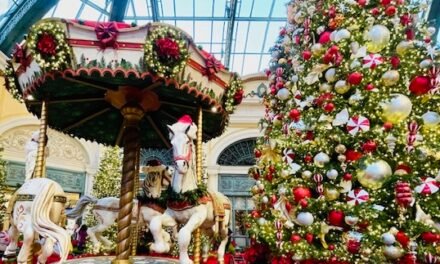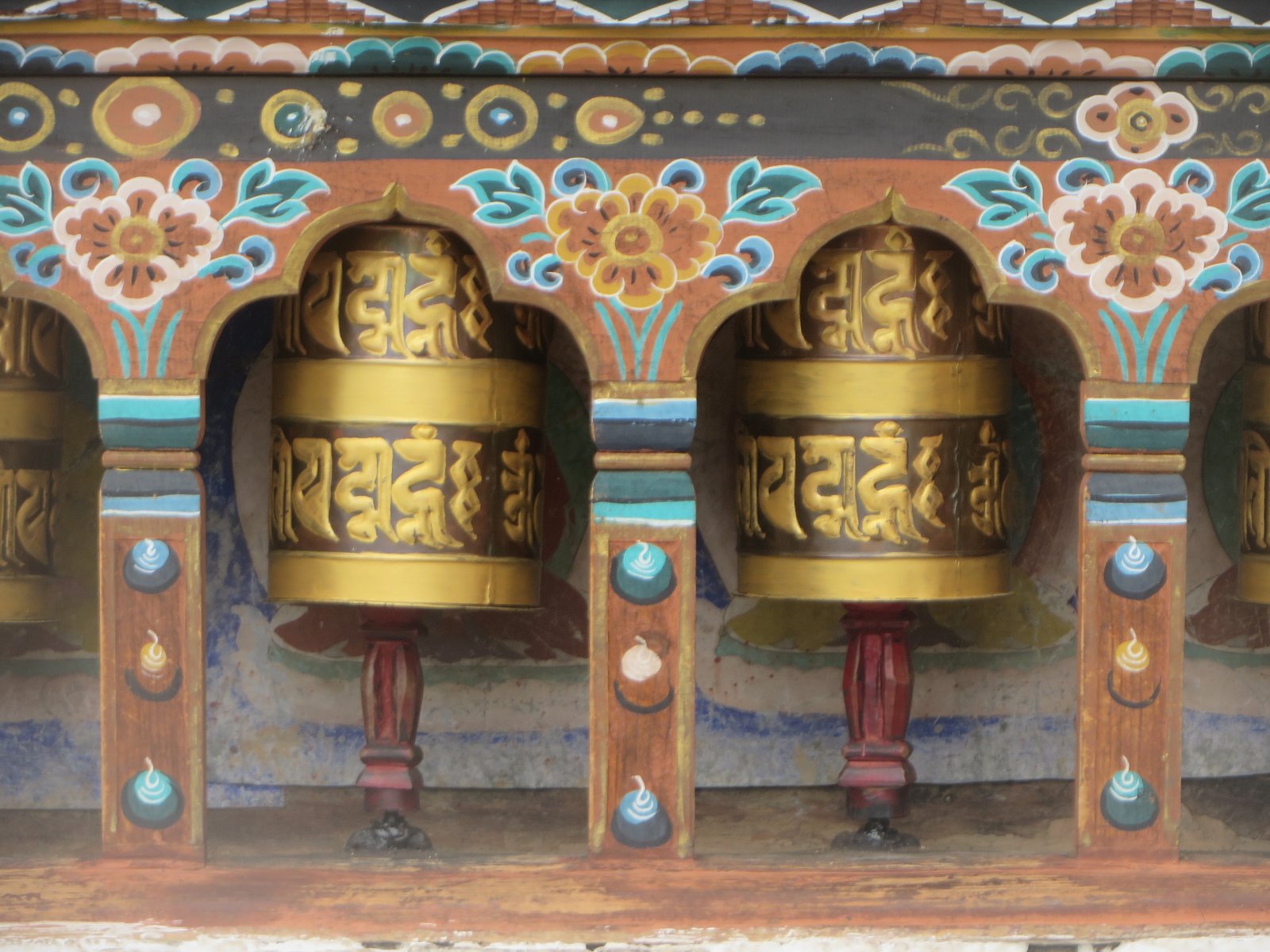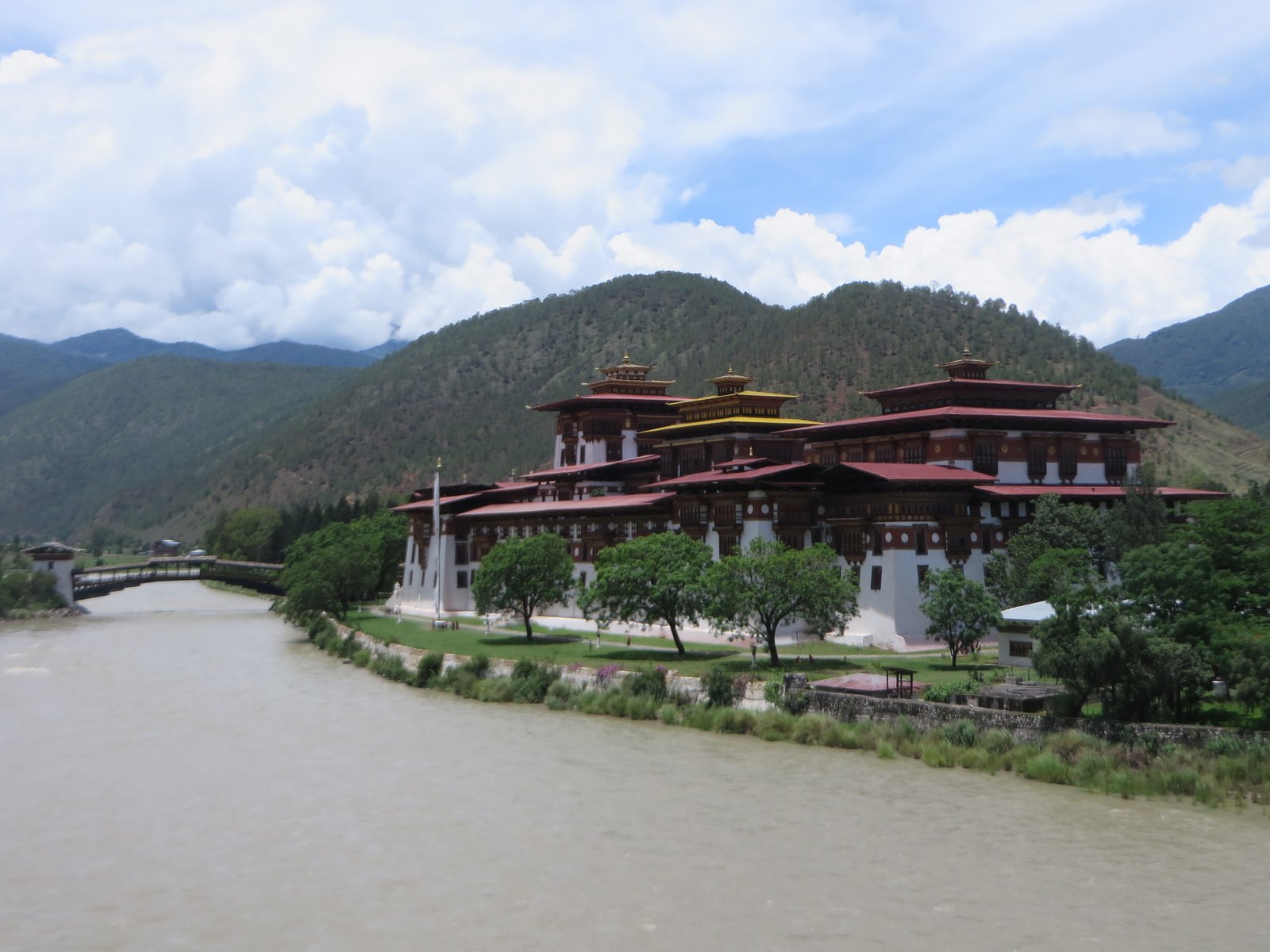
Mountains, Monasteries and More in the Mystical ‘Land of the Thunder Dragon’
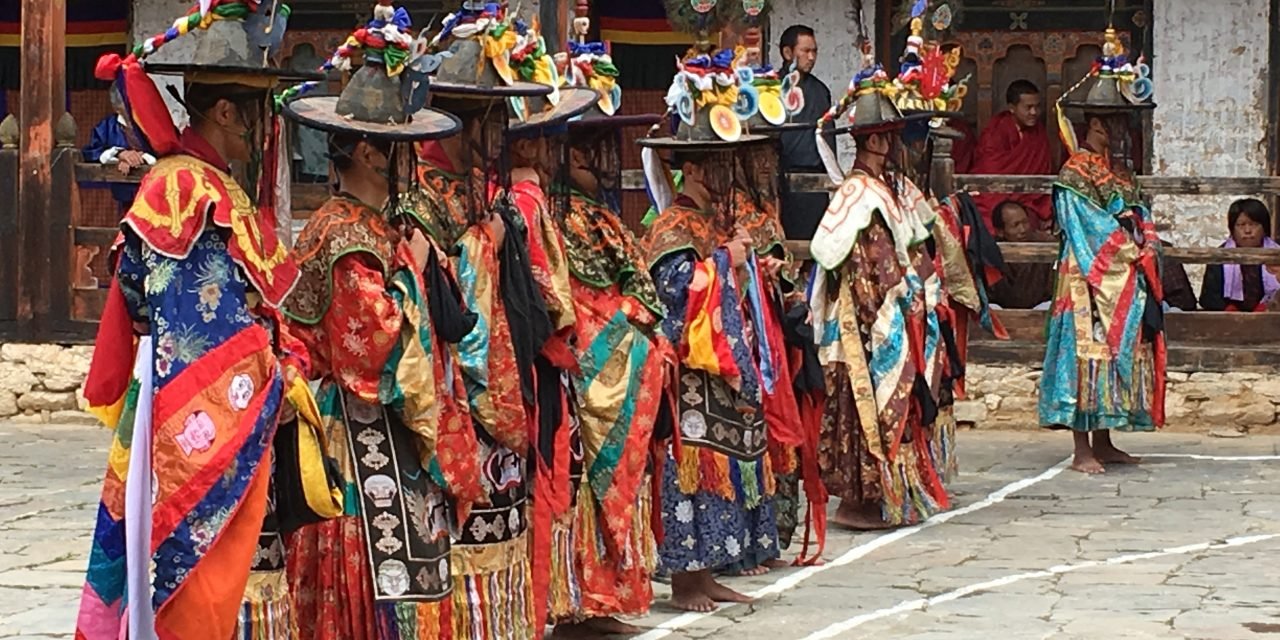
A revered lama and leading astrologer, Master Wengdi of the Paga Monastery in Bhutan, told me that I’m a fire monkey, born under a metal sign that imbues me with confidence and energy. Driven to success, I often gravitate towards leadership roles where I can exercise control and call upon my ability to draw people to me. But, I can be competitive and stubborn (true), allowing my strong will and needs to overwhelm me, sometimes making decisions based on emotion and not logic (also true).
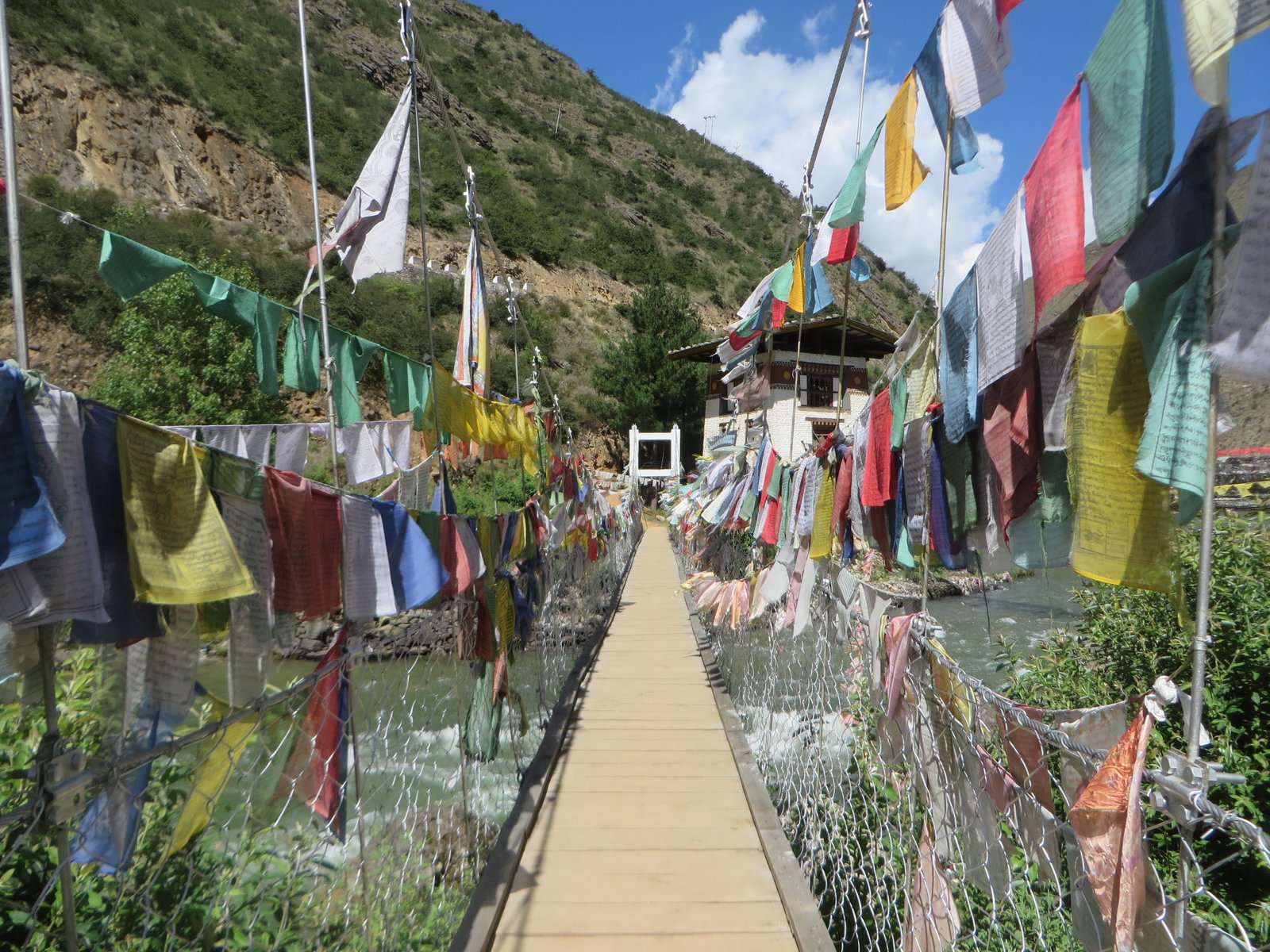 To help balance the forces within me, Master Wengdi recommended that I practice patience and focus on doing more acts of compassion in my life. He ended my astrological session by telling me that 2017 is a lucky year for fire monkeys, but that I should take precautions to avoid being near construction sites in the coming months. And, oh, I should also wear bright colored clothing.
To help balance the forces within me, Master Wengdi recommended that I practice patience and focus on doing more acts of compassion in my life. He ended my astrological session by telling me that 2017 is a lucky year for fire monkeys, but that I should take precautions to avoid being near construction sites in the coming months. And, oh, I should also wear bright colored clothing.
I had gone on a trip to Bhutan with Myths and Mountains, a highly acclaimed tour company, to learn more about this tiny kingdom in the Himalayas and its deep-rooted Buddhist traditions. However, I never expected that in the process I would have a personal spiritual journey.
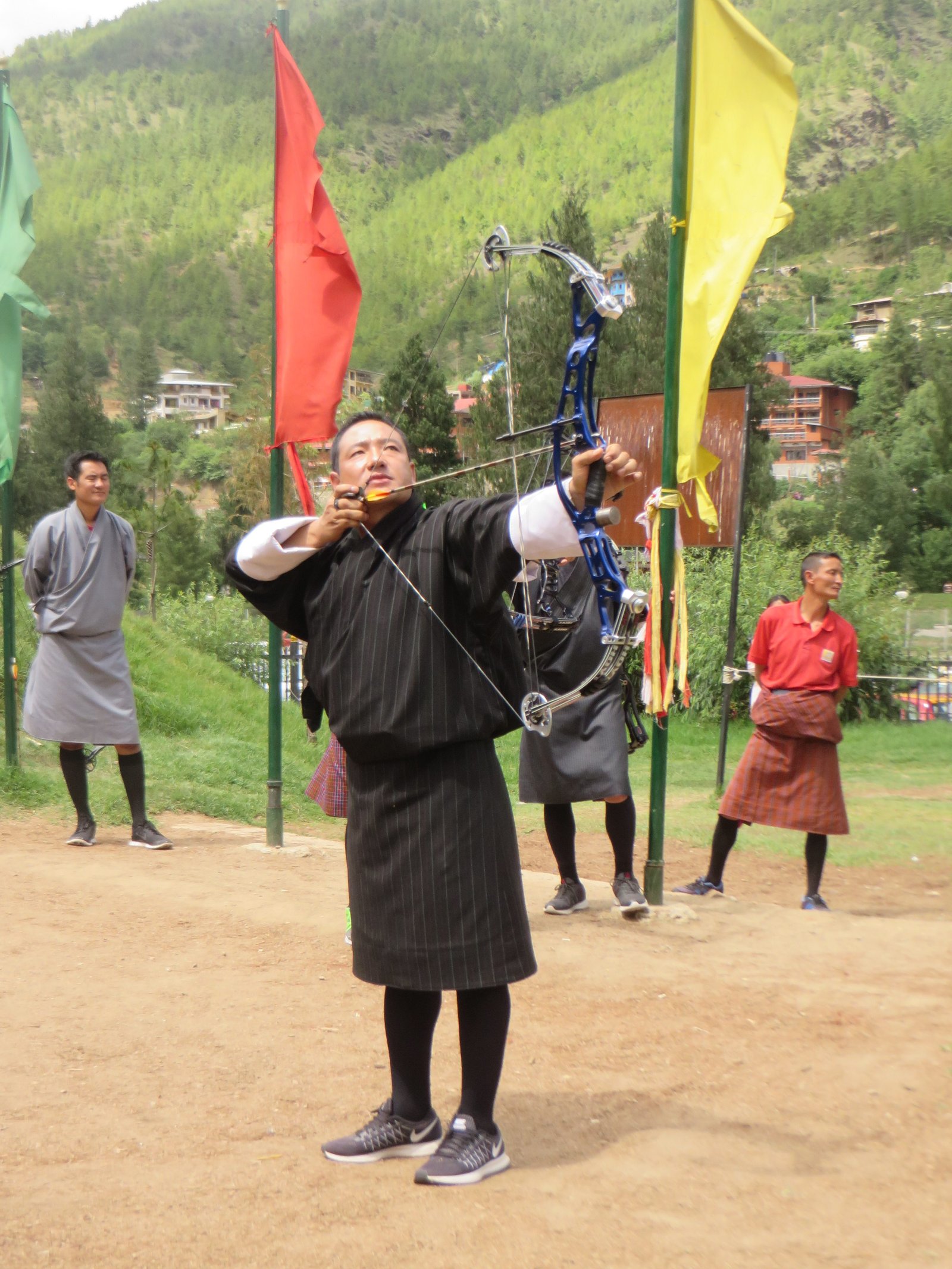 Known as the “Land of the Thunder Dragon,” Bhutan, with a population of roughly 750,000, is nestled between two powerful neighbors: China in the north and India in the south. Almost completely cut off for centuries, the country began to open up to foreigners and some aspects of the outside world in the 1970s, while continuing to fiercely guard its ancient mores. The fear has always been that external influences would undermine Bhutan’s monarchy and culture. In fact, television didn’t even come to the country until 1999, followed later by the internet.
Known as the “Land of the Thunder Dragon,” Bhutan, with a population of roughly 750,000, is nestled between two powerful neighbors: China in the north and India in the south. Almost completely cut off for centuries, the country began to open up to foreigners and some aspects of the outside world in the 1970s, while continuing to fiercely guard its ancient mores. The fear has always been that external influences would undermine Bhutan’s monarchy and culture. In fact, television didn’t even come to the country until 1999, followed later by the internet.
Visitors to Bhutan will discover that it is no ordinary place, but rather a realm shrouded in mystery and magic. Some consider it to be the last “Shangri La.” The kingdom is notable for its lofty peaks, venerated religious sites, diversity of flora and fauna and distinct national identity based on Buddhism. Its dramatic landscapes range from subtropical plains to snow-capped mountains and lush valleys. Picture-book vistas are around every corner, with environmental protection key to this unspoiled, staggering beauty.
 By law, at least sixty percent of the country must remain under forest canopy for all future generations. Current figures are above seventy percent. Bhutan prides itself on being carbon neutral, but it actually absorbs more carbon than it emits, offering one of the remaining pristine pockets in the entire Himalaya.
By law, at least sixty percent of the country must remain under forest canopy for all future generations. Current figures are above seventy percent. Bhutan prides itself on being carbon neutral, but it actually absorbs more carbon than it emits, offering one of the remaining pristine pockets in the entire Himalaya.
Happiness is akin to holiness here and the nation’s progress and prosperity are measured not by the standard GDP, but rather by a unique barometer known as “Gross National Happiness” or GNH. Pioneered by the fourth monarch of the country back in 1971, the GNH is set in policy and based on the pillars of equitable social development, cultural preservation, conservation of the environment and the promotion of good governance.
 The belief is that the rich are not always happy, while the happy generally consider themselves rich. And true development of society transpires when material and spiritual development occur side by side, complementing and reinforcing one another. The philosophy of GNH has received recognition on an international level. In fact, the United Nations has implemented a resolution recognizing that the GDP does not adequately reflect the happiness and well-being of people, and that the pursuit of happiness is a fundamental human goal.
The belief is that the rich are not always happy, while the happy generally consider themselves rich. And true development of society transpires when material and spiritual development occur side by side, complementing and reinforcing one another. The philosophy of GNH has received recognition on an international level. In fact, the United Nations has implemented a resolution recognizing that the GDP does not adequately reflect the happiness and well-being of people, and that the pursuit of happiness is a fundamental human goal.
As you travel throughout Bhutan, you will see affirmations directed towards this idea of happiness. There are signs posted everywhere along the roads that offer mantras, such as: “Life is a journey! Complete it!” Or: “Let nature be your guide,” and my favorite, “Fashion your life as a garland of beautiful deeds.” They give a person pause to think about his/her actions and consider how they are affecting the quality of life.
 Bhutan is not a rich country by economic standards, but it has a richness seldom found elsewhere. It’s in the natural beauty of the scenery and ancient buildings, combined with the grace and warmth of the people, as well as the genuine spirituality that derives from their Buddhist beliefs. More than a religion, Buddhism is a way of life that permeates every facet of secular existence, bringing with it a reverence for the earth and its well-being along with the desire to be mindful and aware of one’s thoughts and actions. The Buddhist path is one of wisdom and understanding with the aim of leading a moral life.
Bhutan is not a rich country by economic standards, but it has a richness seldom found elsewhere. It’s in the natural beauty of the scenery and ancient buildings, combined with the grace and warmth of the people, as well as the genuine spirituality that derives from their Buddhist beliefs. More than a religion, Buddhism is a way of life that permeates every facet of secular existence, bringing with it a reverence for the earth and its well-being along with the desire to be mindful and aware of one’s thoughts and actions. The Buddhist path is one of wisdom and understanding with the aim of leading a moral life.
As a visitor to the country, you can’t help but notice the presence of Buddhism everywhere you go. It’s in the massive dzongs (monastery-fortresses), temples, monasteries, stupas (receptacles for offerings), fluttering prayer flags and golden prayer wheels that punctuate a landscape of dazzling rice fields and villages unchanged by time. You’ll hear the chime of ritual bells and the sound of gongs while observing throngs of people circumnavigating the stupas and shaven-headed monks in red robes conducting assorted rituals. They serve as testaments to the importance of Buddhism in Bhutanese life.
 On Myths and Mountains’ “Bhutan and its Buddhist Traditions” trip, participants do more than simply visit noted sites in typical tourist fashion. The focus instead is more on developing an understanding of Buddhism and its teachings, and how the various beliefs are interwoven into the cultural fabric of the country. It’s an experiential journey that offers many opportunities to be immersed in the rituals and practices, as well as to interact with the people on a personal level. This type of approach allows one to go beneath the surface, to gain deeper knowledge and increased perspective–and maybe even achieve greater consciousness in the process.
On Myths and Mountains’ “Bhutan and its Buddhist Traditions” trip, participants do more than simply visit noted sites in typical tourist fashion. The focus instead is more on developing an understanding of Buddhism and its teachings, and how the various beliefs are interwoven into the cultural fabric of the country. It’s an experiential journey that offers many opportunities to be immersed in the rituals and practices, as well as to interact with the people on a personal level. This type of approach allows one to go beneath the surface, to gain deeper knowledge and increased perspective–and maybe even achieve greater consciousness in the process.
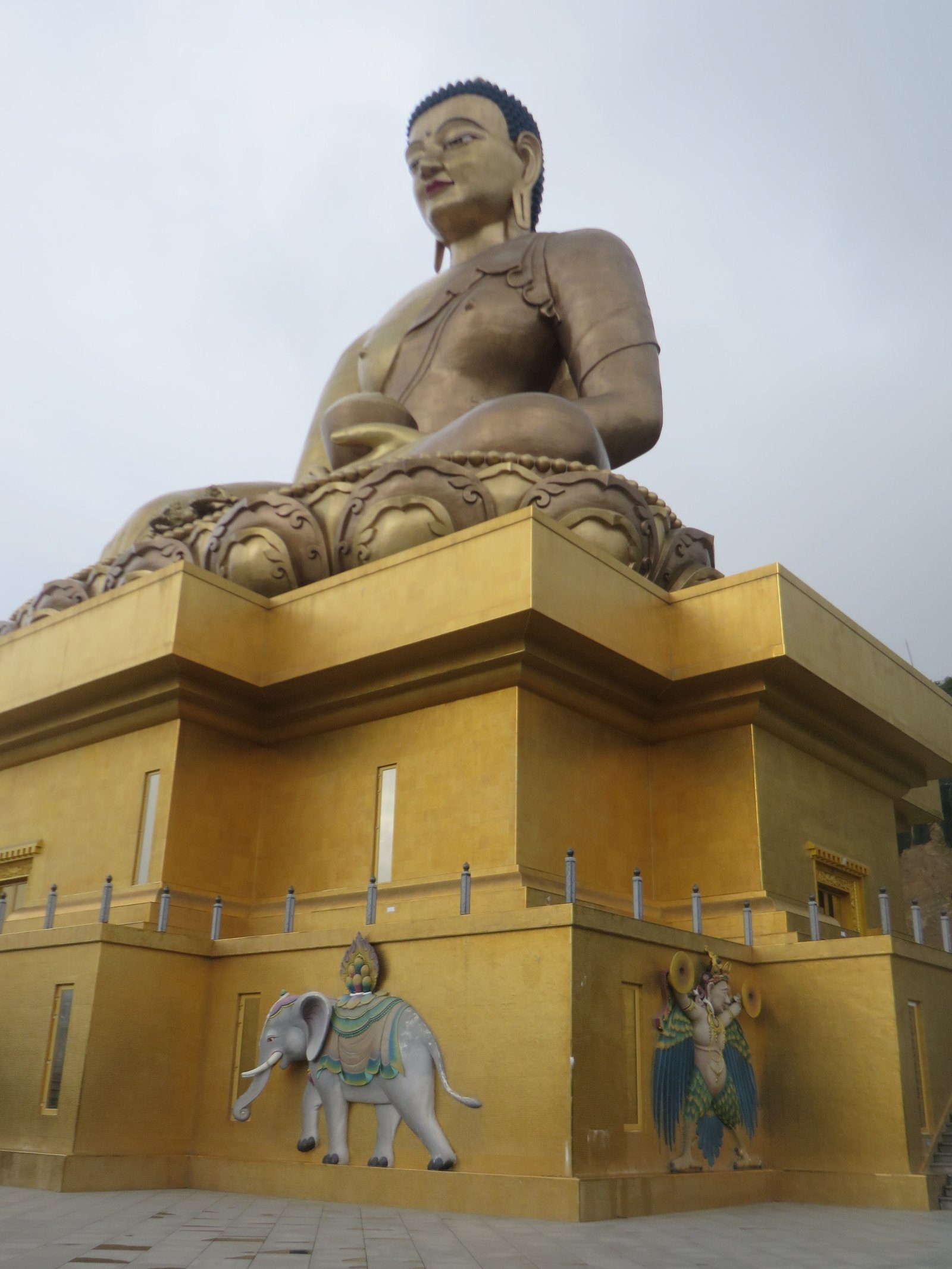 One morning, for example, our group started the day early with a cleansing ceremony at a temple in the capital city, Thimphu. A Buddhist monk conducted the ritual which included chanting, prayers, lit candles and the use of water and rice, which were either dripped or strewn to disperse any bad energy. At the conclusion of the ceremony, the monk tied a blue string around each of our wrists signifying we’d been blessed and sending us off with a wish for good luck in the future.
One morning, for example, our group started the day early with a cleansing ceremony at a temple in the capital city, Thimphu. A Buddhist monk conducted the ritual which included chanting, prayers, lit candles and the use of water and rice, which were either dripped or strewn to disperse any bad energy. At the conclusion of the ceremony, the monk tied a blue string around each of our wrists signifying we’d been blessed and sending us off with a wish for good luck in the future.
We also experienced a smoke ceremony, as well as a Dued ritual. The former involves burning herbs and incense to cleanse the contaminated mind and body and feed the deities of the land. This ceremony is believed to eliminate obstacles from the path of these spirits. When they are content, the environment gets purified. In the Dued ritual, the goal is similar: to cleanse all the negative interference from the world of spirits. We participated in such a ritual at Paga Monastery, conducted by Master Wengdi and the other resident monks, who ranged in age from four on up.
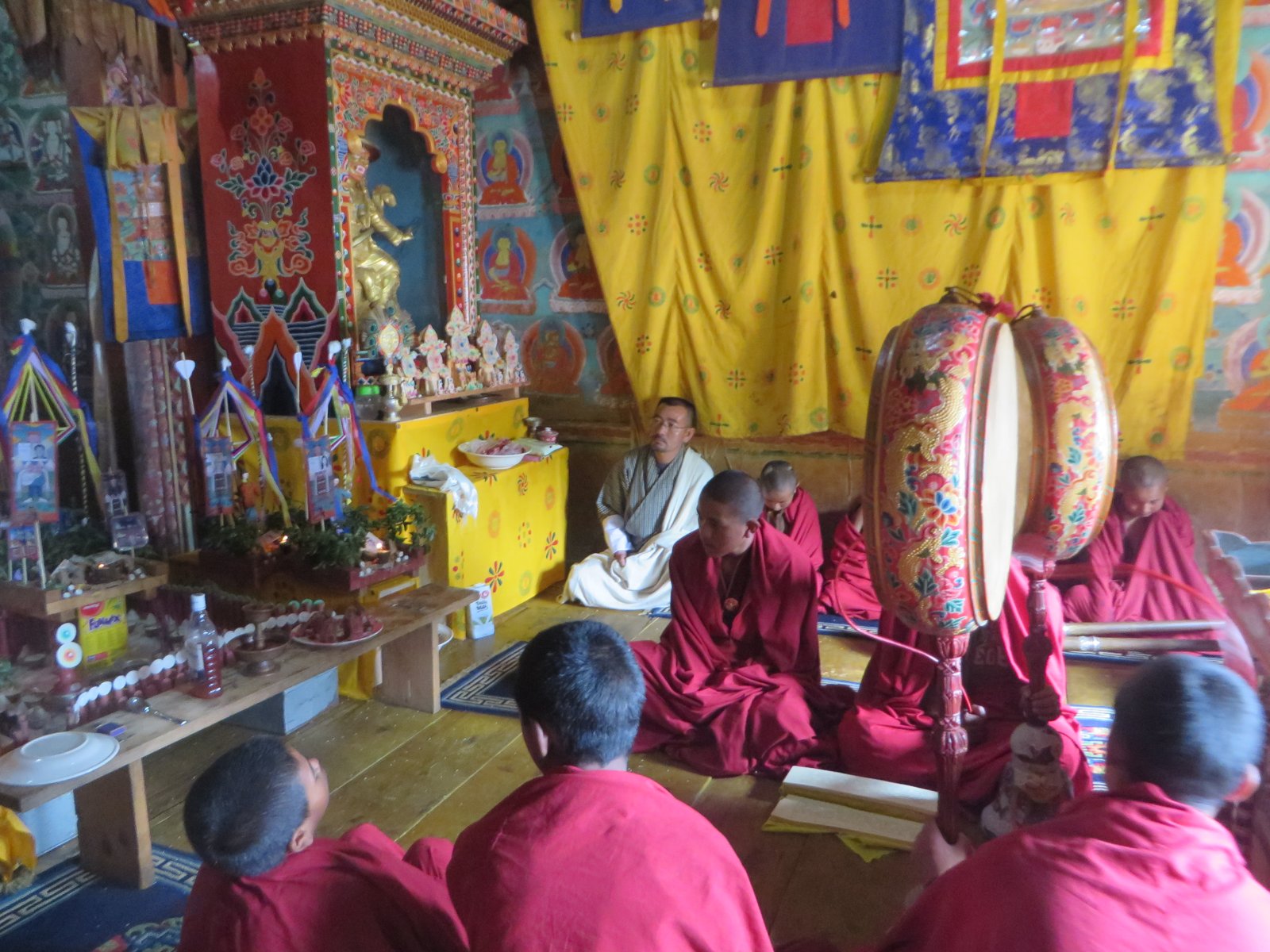 The ceremony featured extensive recitation of prayers, drumming, trumpets made from human thigh bones, metal horns, hand bells, various offerings of cakes and liquor, along with the proverbial rice. Each person in our group had his/her own personal altar, which had been created by the monks. We placed offerings of wheat dough and monetary donations and then added scraps of our old clothing. The altars were later taken outside to be burned to combat spirits that bring illness and bad fortune.
The ceremony featured extensive recitation of prayers, drumming, trumpets made from human thigh bones, metal horns, hand bells, various offerings of cakes and liquor, along with the proverbial rice. Each person in our group had his/her own personal altar, which had been created by the monks. We placed offerings of wheat dough and monetary donations and then added scraps of our old clothing. The altars were later taken outside to be burned to combat spirits that bring illness and bad fortune.
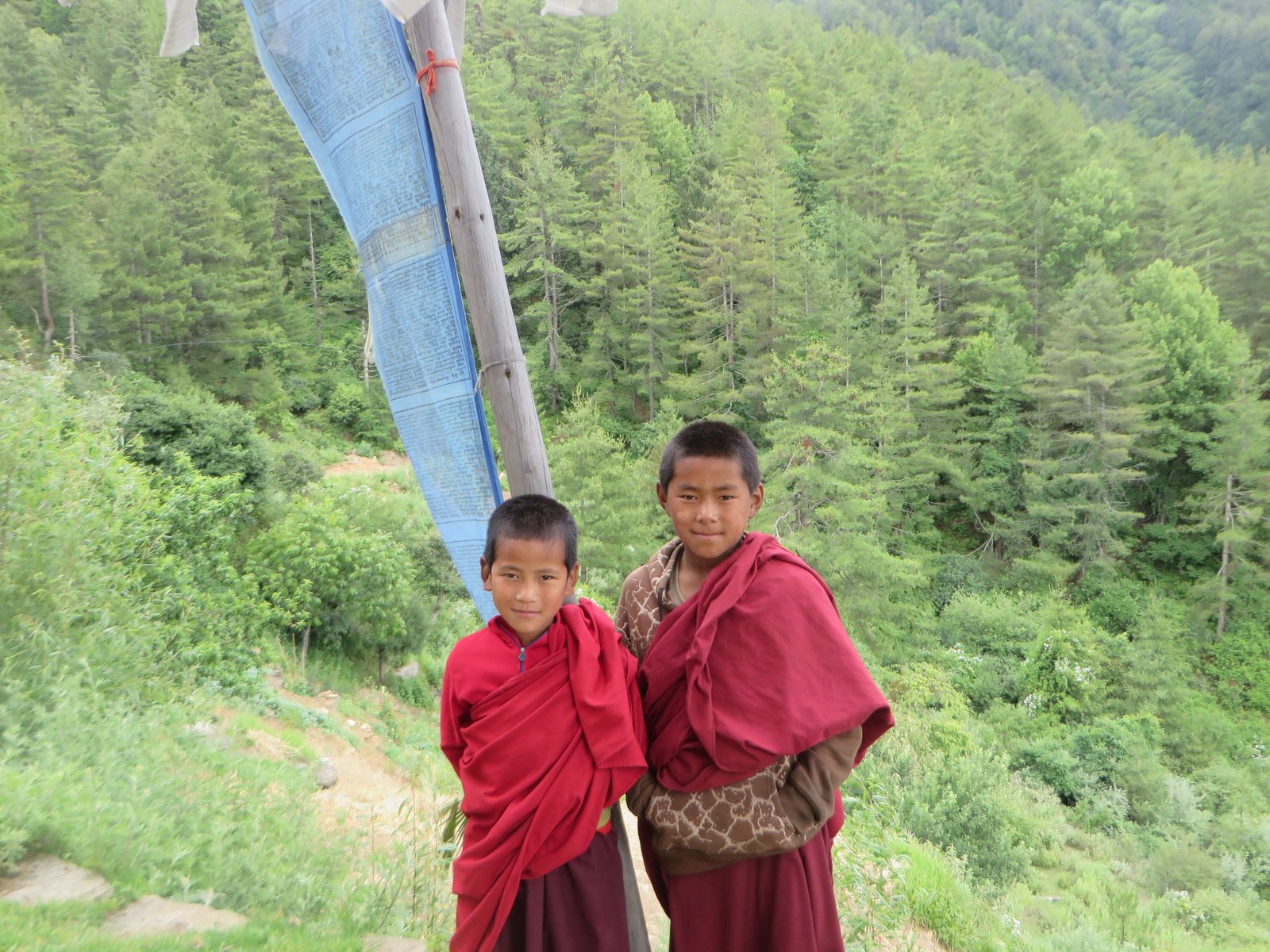 During our time at the monastery, we were able to learn more about the life of a monk and the years of training and education required to undergo such a vocation. Many of the young boys we encountered came from poor, rural backgrounds where there is little hope of finding work or education. It is a common practice in Bhutan for parents in such situations to place one or more of their sons within a monastery, often because they can’t afford to feed them or to pay for the uniforms or textbooks required at the government run schools. The lifelong service of a monk is a respected path and represents a better future.
During our time at the monastery, we were able to learn more about the life of a monk and the years of training and education required to undergo such a vocation. Many of the young boys we encountered came from poor, rural backgrounds where there is little hope of finding work or education. It is a common practice in Bhutan for parents in such situations to place one or more of their sons within a monastery, often because they can’t afford to feed them or to pay for the uniforms or textbooks required at the government run schools. The lifelong service of a monk is a respected path and represents a better future.
The children we spoke with were learning English because the language is a requirement of their schooling. They were initially shy but eventually warmed up to us. We found it amusing and heartwarming to see that their behavior was characteristic of young boys all over the world. I caught several poking at each other and making funny faces during the ceremony. A few yawned and even dozed. One threw rice at his friend’s back, but immediately denied being the culprit when his pal turned around in annoyance.
 Another day, our group observed a trio of monks creating a mandala. One of the richest visual symbols in Buddhism, the mandala is a representational picture of the universe and the basis or foundation for the teachings of the religion. It can be a painting on a wall or scroll, or created in colored sands on a table or board. The mandala has several parts and each object has significance, representing an aspect of wisdom or a guiding principle. It is often used to aid enlightenment and to assist with healing but can be dedicated to a variety of desired outcomes.
Another day, our group observed a trio of monks creating a mandala. One of the richest visual symbols in Buddhism, the mandala is a representational picture of the universe and the basis or foundation for the teachings of the religion. It can be a painting on a wall or scroll, or created in colored sands on a table or board. The mandala has several parts and each object has significance, representing an aspect of wisdom or a guiding principle. It is often used to aid enlightenment and to assist with healing but can be dedicated to a variety of desired outcomes.
Making a mandala is no easy task. It takes extensive knowledge and practice, as well as patience and highly developed fine motor coordination! I developed a newfound appreciation for such skill, especially later when given the chance to make my own mandala using colored rice. I also learned that such symbols are destroyed after completion to serve as a reminder of the impermanence of life.
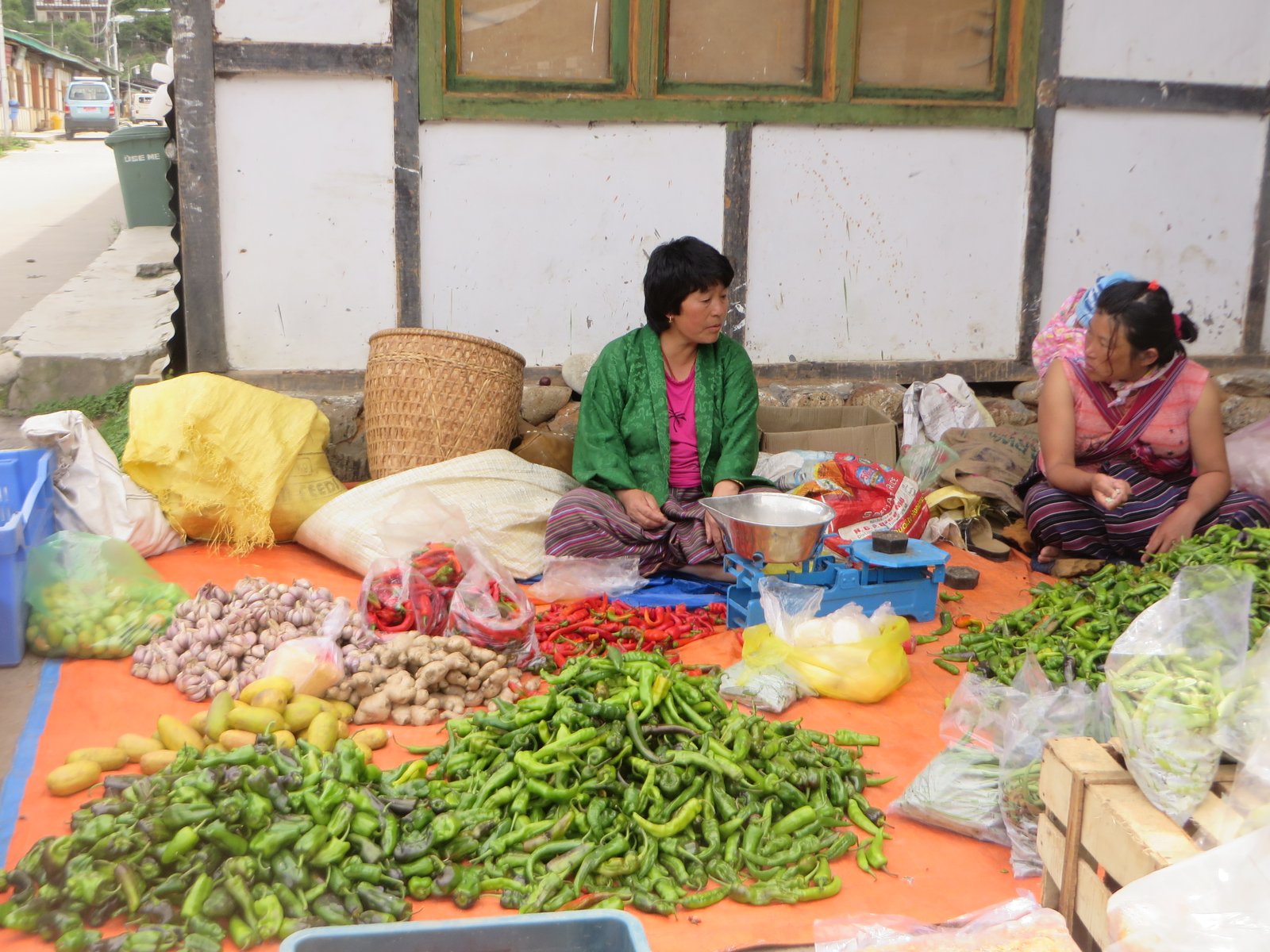 Though I understood the reasoning, it didn’t make it any easier for me to aid in the destruction of an incredibly beautiful piece of work. We collected the sand to be disbursed into a river at another time, as a means to extend the healing powers to the whole world.
Though I understood the reasoning, it didn’t make it any easier for me to aid in the destruction of an incredibly beautiful piece of work. We collected the sand to be disbursed into a river at another time, as a means to extend the healing powers to the whole world.
Our group received instruction in the colors that feature so predominantly in mandalas, as well as in the ubiquitous prayer flags that are displayed throughout the countryside. The hues of red, green, white, yellow and blue follow the astrological directions. They are attached to five characteristic elements: fire, water, earth, iron and wood. Each of us is assigned one of these elements at birth, which determines dominant personality or traits.
 The colors are also used in Bhutanese indigenous medicine. Dr. Lobzeng at the National Traditional Medicine Hospital introduced these applications to our group. He explained that health problems are understood as imbalances among space, fire, wind, water and earth. The body physically reacts when one experiences overwhelming emotions such as anger, desire or hatred. Too much anger, for example, can create heat related disorders like fevers and inflammation, while intense desire can cause wind associated issues such as dizziness and vertigo.
The colors are also used in Bhutanese indigenous medicine. Dr. Lobzeng at the National Traditional Medicine Hospital introduced these applications to our group. He explained that health problems are understood as imbalances among space, fire, wind, water and earth. The body physically reacts when one experiences overwhelming emotions such as anger, desire or hatred. Too much anger, for example, can create heat related disorders like fevers and inflammation, while intense desire can cause wind associated issues such as dizziness and vertigo.
Remedies are prescribed which seek to re-establish balance within the individual. Traditional treatments range from herbal steam baths and warm oil compression therapy to acupuncture with silver or gold needles.
 As part of our continued experience with Buddhism, we made tsa-tsas with wheat flour. A tsa-tsa is a little monument that Buddhists use as an offering. It’s a powerful means of dispelling obstacles to one’s well-being and increasing one’s luck-force, but it can also be made to benefit a suffering soul of a deceased relative, friend or pet. After being blessed by a monk, these offerings are put in various places that are considered holy, such as on altars, near Buddha statues, by lakes, in caves and other sites. As our tsa-tsas were made of flour, we were able to throw them in the water to benefit the fish.
As part of our continued experience with Buddhism, we made tsa-tsas with wheat flour. A tsa-tsa is a little monument that Buddhists use as an offering. It’s a powerful means of dispelling obstacles to one’s well-being and increasing one’s luck-force, but it can also be made to benefit a suffering soul of a deceased relative, friend or pet. After being blessed by a monk, these offerings are put in various places that are considered holy, such as on altars, near Buddha statues, by lakes, in caves and other sites. As our tsa-tsas were made of flour, we were able to throw them in the water to benefit the fish.
Later in the trip, our group hoisted prayer flags together in tent-like formation on a hill overlooking a river. These colorful pieces of cloth are inscribed with prayers, mantras and auspicious symbols. They are said to bring happiness, wish fulfillment, long life and prosperity to the flag planter and those in the vicinity. Additionally, they are used to appease local spirits and gods, which is why you will often see them placed in natural settings.
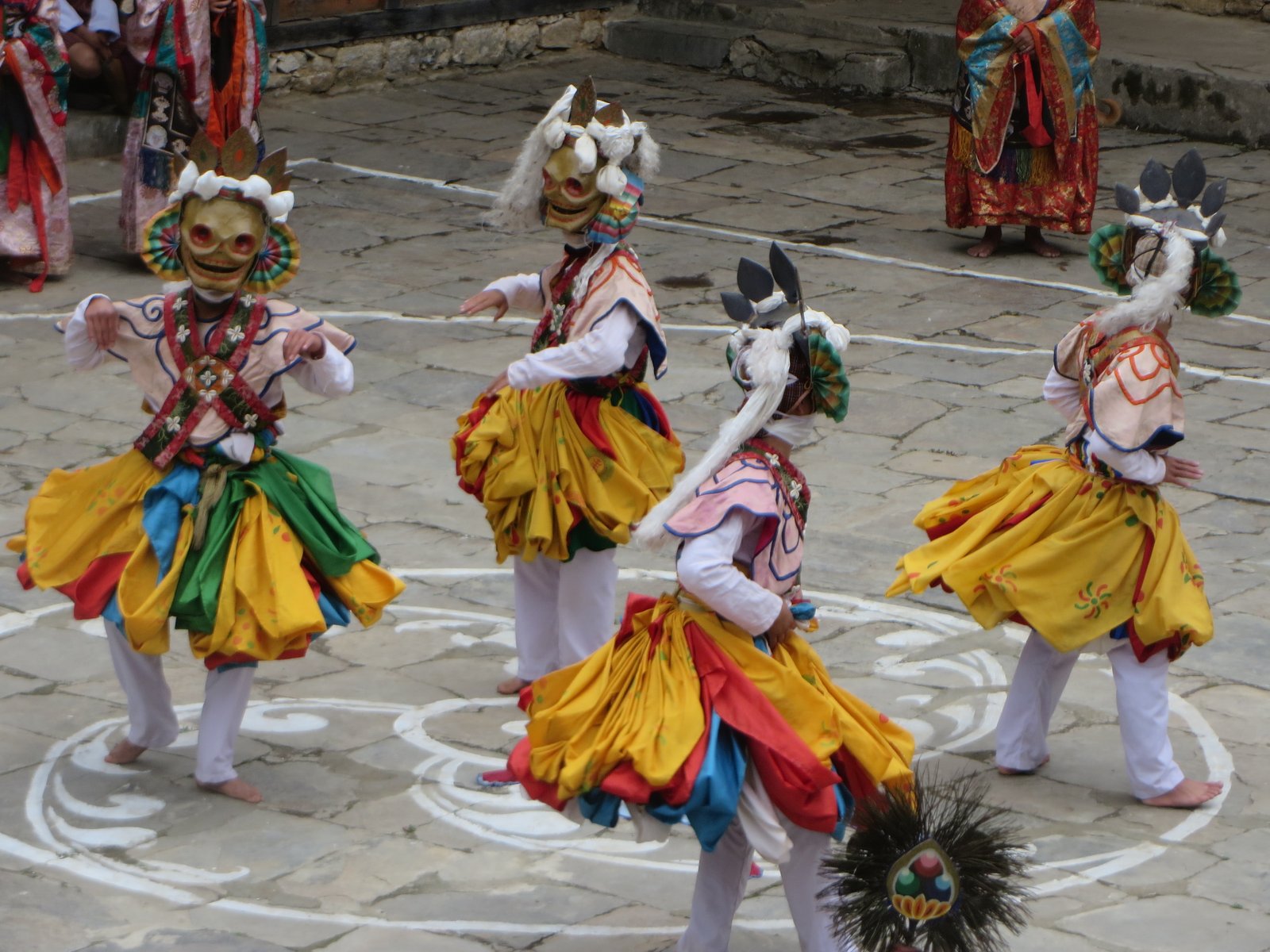 Buddhists believe the flags generate spiritual vibrations that are released when the wind blows and the prayers are carried in the air. Before putting the flags up, however, it’s important to check with a monk if the planned day is an auspicious astrological date, so as to bring about only positive results.
Buddhists believe the flags generate spiritual vibrations that are released when the wind blows and the prayers are carried in the air. Before putting the flags up, however, it’s important to check with a monk if the planned day is an auspicious astrological date, so as to bring about only positive results.
Prayer wheels are also an integral part of Buddhism. These cylindrical wheels of all sizes contain scrolls that are repeatedly inscribed with mantras to purify negativity, generate compassion and dispel barriers to enlightenment. By turning them clockwise, the mantras inside are activated and released. Buddhist believe that mindfully spinning a prayer wheel produces the same benefits as reciting the number of mantras inside the prayer wheel. The key word here is “mindful,” as simply turning the wheel by force of habit is not the same as approaching it with thought and intention. To help achieve mindfulness, Buddhists practice meditation, using techniques that encourage and develop concentration, clarity, emotional positivity and the ability to calmly see the true nature of things.
At Mebartsho Lake, a holy site in central Bhutan’s Jakar Valley, we had the opportunity to enjoy meditating while listening to a pair of nuns chant prayers in the quiet of the morning. The sounds of birds and rushing water accompanied them, helping to create a sublime setting. Mebartsho is known as the “burning lake,” as it is from this body of water that Terton Pema Lingpa, an incarnated disciple of Guru Rinpoche (the patron saint of Bhutan), was believed to have discovered treasure in the late 15th century. With a butter lamp in hand, he jumped into the lake and reemerged holding a chest and a scroll of paper in his hand, astonishing the cynical local ruler and village people. The butter lamp in his hand was still burning bright, thus, the name “burning lake” was coined.
Festivals are a highlight of any trip to Bhutan and we were fortunate to see the Nimalung Festival in Chumey Valley. The country has many indigenous celebrations and the most popular are the Tsechu festivals. Tsechu means “the tenth day” of the lunar calendar when Guru Rinpoche was born. Such religious festivals are held in various temples, monasteries and dzongs, where communities come together to watch spectacular dances, receive blessings and socialize. The people dress in their finest traditional attire. Men wear the gho, a knee-length, kimono-like robe that is tied at the waist by a belt known as a kera. The kangaroo style pouch that forms at the front was once used to carry food bowls and a small dagger. Today, however, it holds articles such as wallets and mobile phones. Women wear the kira, a long, ankle-length dress, accompanied by an outer jacket known as a tego. It is common to see men and women clothed in such fashion during the day, while at work, and not only on special occasions.
Mask dances take center stage at the festivals. Each one has a special meaning or a story behind it and many of them are based on incidents that happened centuries ago. Most are performed by monks and/or village men. In the Black Hat Dance, for example, performers attempt to subdue and drive out the evil spirits. The men wear spectacular brocade robes and tall, wide-brimmed black hats, and execute a series of mesmerizing movements. The drama is intense and it’s difficult to take your eyes off these whirling dervishes. Observing these performances was a feast for the senses, with hypnotic music and drumming, colorful costumes, the smell of incense and the rapt faces of the elated crowd.
In addition to festivals, temples and dzongs are major attractions in Bhutan. Some highlights include the Temple of the Divine Madman, dedicated to a popular lama known for a radical approach to Buddhism in the 15th century; Punakha Dzong, which served as Bhutan’s capital from 1637 to 1955 and was the birthplace of many cultural, social, economic and political foundations; Tamshing Lhakhang, known for having the oldest surviving wall paintings in Bhutan; Paro Dzong, a massive and stunning work of architecture; and Kyichu Lhakhang, the oldest temple in the country. Also of special mention is the Buddha Dordenma Statue, which overlooks Thimphu Valley. At 169 feet, it is the tallest sitting Buddha in Asia. Still under construction, this massive figure is made of bronze and gilded in gold, and contains 125,000 smaller Buddha statues inside.
The piece de resistance, however, has to be the Taktsang Monastery, otherwise known as the Tiger’s Nest. This is said to be the most sacred site in the country, as it is widely considered the cradle of Bhutanese Buddhism. Guru Rinpoche materialized here some 1,300 years ago on the back of a flying tigress. Story has it that he took shelter in a series of caves and preceded to meditate for three years before setting about converting the Bhutanese to Buddhism. The structure that commemorates this auspicious beginning was built nine centuries later, although the buildings seen today have been replaced several times, including major reconstruction completed in 2005 after a fire devastated the place in 1998.
The trek to get to the monastery is a pilgrimage that every visitor to Bhutan hopes to undertake. And though it involves a bit of uphill legwork, the climb is well worth the effort, as the rewards are great. As you hike the seemingly endless snaking path up the mountain, peek-a-boo views of the place emerge at various junctures. Sometimes it is shrouded in an eerie mist, adding an aura of heaven to the place; other times, the clouds dissipate and the monastery in all its glory emerges. Precariously perched on the side of a sheer, granite cliff at a height of 10,240 feet, it appears to shimmer with its whitewashed walls and golden pinnacles. Prayer flags and water-powered prayer wheels line the route, along with blue pine trees festooned with moss. If you’re lucky, you might see one of the resident golden langur monkeys hanging out in the trees. You’ll share the route with sojourners from all over the world who project a kindred spirit and reverence for this special journey. A sense of camaraderie is present, as is the sweat that pours from everyone’s faces!
 The final approach to the monastery is over a bridge across a dramatic waterfall that drops 200 feet into a sacred pool. The entire area is wrapped in prayer flags, while rock crevices are crammed with tsa-tsas. One last brutal flight of steep rock steps delivers you to the monastery. Inside are various temples and other chambers full of Buddhist icons and offerings of food and money heaped upon altars. Flickering butter lamps cast a warm glow upon the scene. The main attraction is Guru Rinpoche’s meditation cave, though most visitors only see the door to the cave, as it is open for public viewing just once a year.
The final approach to the monastery is over a bridge across a dramatic waterfall that drops 200 feet into a sacred pool. The entire area is wrapped in prayer flags, while rock crevices are crammed with tsa-tsas. One last brutal flight of steep rock steps delivers you to the monastery. Inside are various temples and other chambers full of Buddhist icons and offerings of food and money heaped upon altars. Flickering butter lamps cast a warm glow upon the scene. The main attraction is Guru Rinpoche’s meditation cave, though most visitors only see the door to the cave, as it is open for public viewing just once a year.
During our trip, we also enjoyed visiting a traditional farmhouse, which featured special quarters for livestock and grain storage, along with family living space and an altar room. Between the upper level of the house and the roof is an airing area, typically used for drying chilies to use year round. Additionally, we toured the National Textile Museum in Thimphu, where Bhutan’s finest weavings and brocades are on display, and we explored the various art, history and natural science exhibits at the National Museum of Bhutan in Paro.
Handicrafts figure prominently into the Bhutanese culture with weaving, woodworking, paper-making and mandala art as the standouts. There are numerous places to view local artisans creating unique treasures, as well as plenty of shops and marketplaces where such items are sold alongside fresh fruits and veggies and other assorted goods. The outdoor venues are the best for checking out Bhutanese food staples such as rice (white and red), buckwheat noodles, lentils, curry and chili peppers. Chilies are not considered to be a seasoning here, but rather a true and valuable vegetable. Traditional Bhutanese food makes lavish use of dried or fresh red and green chilies, and the national dish consists of chili cooked in cheese. If you’re not accustomed to eating chilies, it’s best to start off slowly and sample small bites before diving into a five alarm fire. But, if Mt. Vesuvius erupts in your mouth, grab for a glass of milk, not water, to take the edge off the heat.
A number of people in Bhutan are vegetarian due to Buddhism’s strict rules regarding the slaughter of animals. Those that do partake in meat will eat stew-like mixtures containing bits of pork, minced chicken or sometimes fish, seasoned with a variety of spices. Momos, Tibetan style dumplings stuffed with meat or veggies, are also popular.
When it comes to beverages, sweet milk tea and salted butter tea are most favored. And as for libations, local beer and spirits distilled from rice, maize, wheat or barley are relatively easy to obtain in the bars, hotels and restaurants.
As you explore Bhutan, you will undoubtedly see groups of men playing archery, the country’s national sport. Take time to watch, as it is a fascinating experience. More than a sport, archery is a celebration of the Bhutanese way of life and an expression of the culture and heritage. It’s a colorful spectacle with everyone dressed up in their very best traditional outfits. Bowmen participate in established routines that include singing and dancing to celebrate each hit.
A trip to Bhutan is the adventure of a lifetime. I am grateful for the services of our phenomenal guide, Kinley, who enriched my experience tenfold by helping interpret all things Bhutanese. He provided extensive background about the country’s history, geography, politics and culture, as well as its Buddhist practices. He was an excellent resource and connected us with experts in the field to obtain further information.
Kinley displayed endless patience with my questions, particularly when it came to understanding the complexities of Buddhism, its many deities, mythical beings and symbolism. I eventually realized that I did not have to fully comprehend all the intricacies of this multi-layered religion, for the reality is that a month from now I will most likely not recall the dates, names and specific details. What I will always remember, however, is that Buddhism is first and foremost about compassion –something we all can do with more of – and balance, something this fire monkey will continue to strive for in her life.
Myths and Mountains is an award-winning adventure travel company for the discerning and inquisitive globe-trotter seeking a hand-crafted, life changing experience. It offers signature itineraries to destinations in Asia, Southeast Asia and South America, based on travelers’ unique travel preferences, with the added benefit of giving back to the communities visited.
For more information: www.mythsandmountains.com






